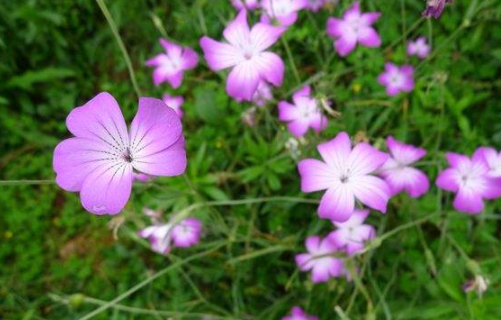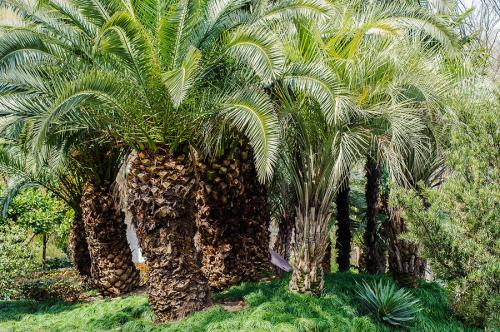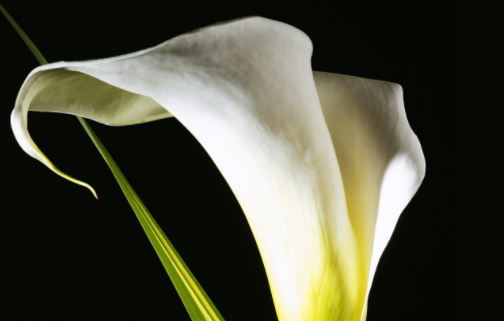How to raise Mai Xianweng
Light
Mai Xianweng is not a flower that needs careful care, it likes the sun very much, so during the growing period of the plant, it is necessary to let the plant receive enough light so that it can grow healthily, but remember to shade the plant in summer so as not to burn the leaves, but not too much shading, otherwise the plant will grow too much, thus affecting the beauty of the plant.

Temperature
Mai Xianweng likes warm environment, but it still has a certain degree of cold tolerance, and the most suitable temperature for plant growth is 15 ℃-35 ℃. Although the plant can tolerate cold, it should be moved into the house for maintenance when the winter temperature is too low. Generally, the indoor temperature should be about 10 ℃, not too high, but not too low.
Watering
Mai Xianweng still has certain requirements for watering, watering must be reasonable, Mai Xianweng is drought-resistant, but it is necessary to keep the basin soil moist during the growth period and follow the watering principle of dry and wet. In the hot summer, more watering is needed to prevent the plant from wilting, and the amount of water should be increased appropriately when the bud is formed.
Fertilizer application
Fertilization is the application of thin fertilizer, once every 10-15 days, before flowering and after flowering, it is necessary to apply phosphorus and potassium fertilizer.
The above is about how to raise Mai Xianweng. Let's take a look at what else Mai Xianweng needs to pay attention to.
Agrostemma githago L Mai Xianweng Picture: how to raise Mai Xianweng / how Mai Xianweng propagates Mai Xianweng Agrostemma githago L alias: wheat poison grass classification: herbaceous flower family genus: plant kingdom angiosperm phylum dicotyledonous class (Dicotyledoneae), also known as Magnolia caryophylla, also known as central placenta Caryophyllaceae Maxianweng flowering stage: summer Mai Xianweng, Latin name: Agrostemma githago L. Caryophyllaceae, Mai Xianweng is an annual herb, 60-90 cm high, the whole plant is densely covered with white hirsute. Mai Xianweng stem solitary, erect, unbranched or upper part branched. Leaf blade linear or linear-lanceolate, base slightly connate, clasping, tip acuminate, midrib obvious. Mai Xianweng stamens slightly exserted, filaments glabrous; style exserted, covered with long hairs. Magnolia capsule ovate, slightly longer than persistent calyx, revolute; seeds irregularly ovate or reniform, black, spinous-convex. The florescence of Mai Xianweng is from June to August and the fruiting period is from July to September. Introduction of Mai Xianweng, Latin name: Agrostemma githago L. Caryophyllaceae, Mai Xianweng is an annual herb, 60-90 cm high, the whole plant is densely covered with white hirsute. Mai Xianweng stem solitary, erect, unbranched or upper part branched. Leaf blade linear or linear-lanceolate, base slightly connate, clasping, tip acuminate, midrib obvious. Mai Xianweng stamens slightly exserted, filaments glabrous; style exserted, covered with long hairs. Magnolia capsule ovate, slightly longer than persistent calyx, revolute; seeds irregularly ovate or reniform, black, spinous-convex. The florescence of Mai Xianweng is from June to August and the fruiting period is from July to September. The morphological characteristics of Mai Xianweng, the leaves are linear or linear-lanceolate, 4-11 cm long, 2-10 mm wide, basally connate or slightly connate, apex acuminate, abaxial midrib raised. Flowers large, ca. 3 cm in diameter, solitary at top of stem and branches; calyx 5-lobed, calyx tube oblong-cylindrical, 12-14 mm long, with 10 raised veins, apically slightly slender, post-anthesis calyx tube thickened, calyx lobes linear, leaves recumbent, longer than calyx tube, up to 3 cm long, with 1 vein; petals 5, much shorter than calyx lobes, petals reddish purple, Obovate and even cuneate, base attenuate into claws, claws white, tip emarginate Stamens 10, two whorls, base of outer stamens connected with petals; ovary 1-loculed, style 5, slender, erect, hirsute, nearly as long as stamens. Capsule ovate, slightly longer than calyx tube, 5-toothed, teeth revolute outward, alternate with calyx lobes; seeds slightly irregular ovate or rounded-reniform, black at maturity, 2.5-3 mm long, surface densely covered with longer verrucous processes. The flowering period is from June to August and the fruiting period is from July to September. Adult plant: 30-80cm tall, with white hirsute throughout, stem erect, simple or branched. Leaves linear or linear-lanceolate, 3-13cm long and 2-10mm wide, basally connate, with semi-adherent white hairs on both sides, and abaxial midrib raised. Flowers large, ca. 3cm in diameter, solitary at stem tip and branch tip; calyx tube oblong-cylindric, 1.5-2cm long, outside villous, with 10 raised veins, post-anthesis calyx tube thickened, lobes 5, linear, up to 3 cm long; petals 5, dark Qiang color, shorter than calyx lobes, apex truncate, throat without scales, base with long claws; stamens 10, shorter than petals; style 5, filiform. Seeds: capsule ovate, slightly longer than calyx tube, enclosed by persistent calyx tube, 1-loculed, containing several seeds; seeds triangular-reniform, 2.5-3.5mm long and wide, black or nearly black, dull, with irregular spinous processes arranged in concentric circles on the surface. The navel is located at the lower end, and its sides are slightly recessed inward, forming a superficial notch. The embryo is annular along the back, surrounding the endosperm, showing a yellowish color; the endosperm is rich and white. Ecological habits of Mai Xianweng born in wheat fields or roadside grass, it is a weed in the field. Mai Xianweng blossoms in summer, it has strong adaptability, can self-sow and reproduce, and grows vigorously. The Variety Classification of Mai Xianweng (Atlas of Chinese plants) Rice poisonous Grass (Northeast Herb Flora) Plate 64:1-4Agrostemma githago L., Sp. Pl. four hundred and thirty five。 1753; Hook. , Fl. Bor. -Amer. 1: 92. 1840; Kom. In Act. Hort. Petrop. 22 (Fl. Mansh. 2): 191. 1903; Hegi, Illustr. Fl. MittelEurop. 3: 273. Taf. ninety-eight。 Fig. 3u. Fig. 564a-c. 1912; Pax et Hoffm. In Engler u. Prantl, Nat. Pflanzenfam. 2. Aufl. 16c: 339. 1934; Muravjeva in Kom. Fl. USSR 6: 575. 1936; I don't know if I know what to do. I don't know what to do. 3: 363. I don't know what to say. thirty-five。 I'm sorry, I'm sorry. 6. 1960; Tutin et al., Fl. Europ. 1: 157. 1964; Atlas of higher plants in China 1: 636. Figure 1272. 1972; northeast herbaceous flora 3: 41. Plate 16. Figure 1-3. 1975. The distribution area of Mai Xianweng produces Heilongjiang, Jilin, Inner Mongolia, *. Mai Xianweng is also found in Europe, Asia, northern Africa and North America. The plant harm of Mai Xianweng is often born in the wheat field, and it is a weed introduced with wheat seeds in the early years. Specimens were collected in northeast China in the 19th century. Because of the bright color of the flowers, they are also introduced and cultivated. Mai Xianweng often harms crops and turf such as wheat, corn and soybeans in northern China. Because the whole plant of this species, especially the seeds, is poisonous, when mixed into grain, it will cause damage to the health of human beings, livestock and poultry. Escaped Mai Xianweng can pose a direct threat to horses, pigs, calves and birds. The medical information and health food therapy information of Mai Xianweng's dietotherapy or medicinal value Huanhua net is only for reference and can not be used as the basis of diagnosis and medical treatment. Any health problems should consult professional health care personnel, the treatment of any disease, please follow the doctor's advice. The ultimate task of protecting flowers: to love yourself, proceed from reality and follow the doctor's advice. For disease, do not be careless, do not postpone, do not give up hope, face it bravely, warm the silent world with love, and protect the inner flower field with your heart. Medicinal value of the whole herbal medicine, the treatment of pertussis and other diseases. Stems, leaves and seeds are poisonous. Chemical constituents of traditional Chinese medicine: seeds contain saponins, raffinose, sucrose 3-(2,4-dihydroxy-6-methylphenyl), alanine [3-(2-dihydroxy-6-methylphenyl) alanine] and nitrate reductase. Efficacy: relieve cough and asthma, warm menstruation and stop bleeding. Indications: for Xinjiu cough, pertussis, tuberculosis cough and other diseases, for women with metrorrhagia, menorrhagia, especially for deficiency cold bleeding. The classics of nature and taste: sweet, bitter, warm. Enter the two meridians of the lung and kidney. Usage: oral administration: fried soup, 3-10 grams. Usage: wheat poison grass can be used as medicine to treat pertussis and hemorrhagic disease in women. The seeds, stems and leaves are poisonous, and livestock can be poisoned if eaten by mistake. If the seeds are mixed into the flour, up to 0.5%, they taste bitter and are at risk of poisoning. Mai Xianweng is also used as raw materials such as washing powder and toothpaste. The toxicity of this species is a poisonous plant included in the Chinese plant atlas database. Its toxicity is seed poison, and its toxicity is related to the growth soil and maturity. The toxicity of exocarp is not great, and the toxic substances are mainly concentrated in kernels and embryos, and the toxicity is greatly reduced after heating. Because the plant is a weed in the field, it is often mixed with the seeds of crops during the harvest season, which often results in human and animal poisoning. Poisoning includes abdominal pain, vomiting, diarrhea, dizziness, low fever, severe spinal pain and dyskinesia, and sometimes coma or death. The animals ate 0.1-1.0% of their own body weight. Seed powder can cause death, in which calves, pigs and dogs are more sensitive to its toxicity, cats, sheep, rabbits and adult cattle are not sensitive to its toxicity, and some animals can also produce certain immunity. Subcutaneous injection of 0.5 g, 0.5 g and 5 g seed extract could cause death in rats, mice and guinea pigs, respectively. Continuous consumption of small amounts of seeds by animals can lead to chronic poisoning, commonly known as "Mai Xianweng poisoning". The main symptoms are salivation, nausea, vomiting, diarrhea, dizziness, dyspnea, coma, paralysis and so on. Continuous consumption in large amounts can cause more serious symptoms, such as intense muscle pain, spasms, respiratory depression and even death. Horse acute poisoning still has pulse speed and weak, elevated body temperature, muscle rigidity, convulsion and death. The dogs vomited frequently in the later stage of poisoning, and muscle fibrillation appeared 45 minutes later, turning from excitement to lethargy, dull sensation, motor disorder, and died quickly because of circulatory failure and respiratory depression. After poisoning of poultry such as birds and chickens, milky secretions in the mouth increased, diarrhea, slow breathing and decreased heartbeat. After the animal died of poisoning, autopsy showed significant gastrointestinal inflammation, brain and spinal cord congestion, cerebral ventricle and medullary cavity often exudate, spinal cord gray and white matter malacia, sometimes red blood cell destruction, fatty degeneration of liver and kidney, and so on. There are 19 kinds of amino acids in the seeds of Mai Xianweng, among which the content of phenylalanine is the highest, and the content of proline, valine and alanine is the lowest. There are 17 kinds of amino acids in the whole grass, of which the content of proline is the highest, followed by Yaminobutyric acid, valine and alanine, while the content of flagine and methionine is the lowest. The results of activity test showed that the total amino acid parts of Mai Xianweng seed and whole grass could significantly promote the growth of wheat in the field, and both significantly promoted the growth of wheat coleoptile in laboratory culture medium, and there was no significant difference between them. The content of each monomer amino acid in the two total amino acid parts is quite different. Proline accounts for 62.09% of all 17 amino acids in the total amino acid of the whole grass, while phenylalanine accounts for 55.95% of all 19 amino acids in seeds, followed by proline content, but only 8.90%. Proline has the effect of stress resistance. It has been reported that proline combined with uracil can increase crop yield, but the similar effect of phenylalanine has not been reported. By classifying amino acids according to the structure of their side chain R groups, and comparing the contents of various types of amino acids, we can find some preliminary rules: a. Non-polar side chain R-group amino acids (non-polar amino acids) account for 88.75% of the total amino acids in seeds and 78.79% in the whole grass. B. the contents of four types of amino acids in seeds and whole grass were basically the same: non-polar side-chain R-based amino acids > uncharged side-chain R-based amino acids > negatively charged side-chain R-based amino acids > positively charged side-chain R-based amino acids. The proportion of the first two types of amino acids in the total amino acids of whole grass and seeds was e6.48 and 97.72 respectively. This proportional relationship also exists in research reports on various amino acids that promote crop growth. C. by comparing the results of the content proportion analysis of various types of amino acids mentioned above and the research results of the effects of amino acids on plant growth, it is concluded that the active amino acids in wheat seeds and whole grass that promote the yield of wheat are mainly composed of non-polar side chain R-based amino acids and combined with other three types of amino acids in a certain proportion. Their yield-increasing effect on wheat may be the synergistic result of multiple effects of different types of amino acids under certain proportions. The chemical constituents of seeds contain saponins, raffinose, sucrose 3-(2-dihydroxy-6-methylphenyl), alanine (3-(2-dihydroxy-6-methyl phenyl) alanine) and nitrate reductase. Picture of Mai Xianweng matters needing attention in breeding of Mai Xianweng
When putting on the pot, you need to put some broken tiles at the bottom of the flowerpot to facilitate drainage, put on a layer of rotten fertilizer, and finally put it into the soil.
Today's content is over. I hope this article can help friends who want to raise wheat fairy Weng, so that they can raise more and better wheat fairy Weng.
- Prev

Planting method of jujube tree
The main results are as follows: 1, the growth of jujube trees needs a certain space and more nutrients, so it should be planted in places where the land is more fertile. If multiple plants are planted, a certain distance should be reserved for them to grow. 2, before planting treatment to dig a good drainage ditch, ditch width of 10-20 cm. And dig up the soil.
- Next

How to raise sea taro flowers
Soil taro flowers still have some requirements for the soil, generally choose rotten leaf soil, peat soil, river sand plus a small amount of retting cake fertilizer mixed with nutritious soil cultivation, if you feel that their configuration is troublesome, you can also go to the florist to buy. The plant has to be changed once a year, and the time will be in spring, after changing the pot.
Related
- Fuxing push coffee new agricultural production and marketing class: lack of small-scale processing plants
- Jujube rice field leisure farm deep ploughing Yilan for five years to create a space for organic food and play
- Nongyu Farm-A trial of organic papaya for brave women with advanced technology
- Four points for attention in the prevention and control of diseases and insect pests of edible fungi
- How to add nutrient solution to Edible Fungi
- Is there any good way to control edible fungus mites?
- Open Inoculation Technology of Edible Fungi
- Is there any clever way to use fertilizer for edible fungus in winter?
- What agents are used to kill the pathogens of edible fungi in the mushroom shed?
- Rapid drying of Edible Fungi

